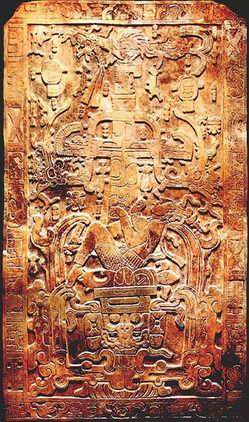|
|
Mayan Cities in virtual |
 |
reality | |
|
Palenque represents the western regional variant of Classic Maya
civilization. Although the earliest occupation of the site dates to about
100 BC, it becomes a major population center only at about 600 AD and all
construction at the site has ceased by about 800 AD. The ruins now visible
are the heavily restored remains of the ceremonial center
One of the most important structures in Palenque is the Tomb of Pakal, discovered in 1952 by Alberto Ruz inside the Temple of the Inscriptions. Pakal's body was placed in the limestone sarcophagus and then it was sealed with a 3.8 by 2.2 meter stone lid. | ||
Photo-Gallery

 |
|
The Pakal's
Tomb
|
 |
|
|
Jade mask |
|
The scene depicted on the cover plate represents the instant of |
||||
|
 |
|||